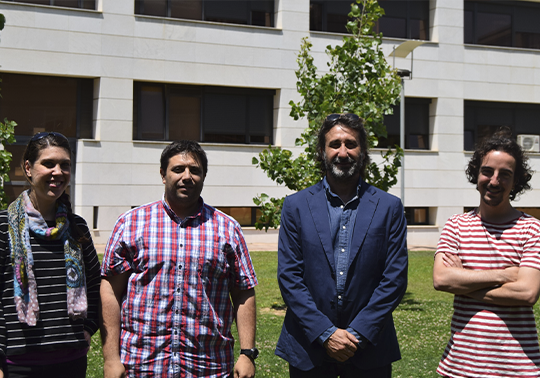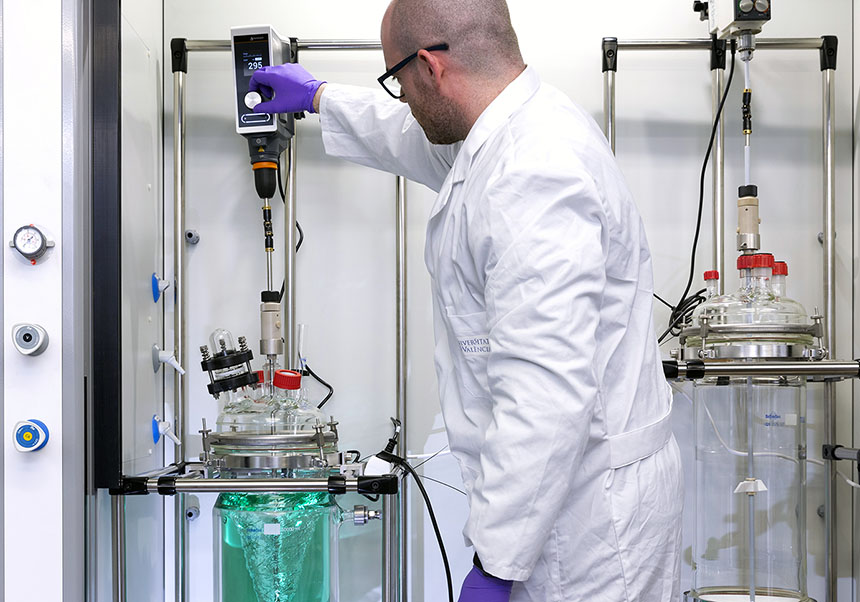Palaeontologists from Cavanilles suggest that the gigantism evolution in predators was based on metabolic changes
- May 5th, 2017

Palaeontologists from the Cavanilles Institute of the Universitat de València have suggested a new hypothesis that explains the causes of the gigantism evolution in predators: metabolic changes as a consequence of internal (endothermy and efficient breathing) and environmental (high temperatures and oxygen concentrations) factors. The proposal, published in the journal ‘Historical Biology’, refers to the current animals (the great white shark or the crocodiles) as well as the extinct ones (dinosaurs, marine and flying reptiles, among others).
The metabolic change is a process that involves changing from one metabolic level to another. For example, “to move from being an ectotherm (or cold-blooded) to an endotherm (warm-blooded); from having an inefficient breathing to a more efficient one; or from living in cold or oxygen deficient environments to the contrary”, states Humberto Ferrón, a researcher from the Cavanilles Institute of Biodiversity and Evolutionary Biology who participates in the study.
The hypothesis made by Ferrón, Carlos Martínez and Héctor Botella, from the research group EVER (Early Vertebrate Evolution Research-group), explains the reason why, despite the fact that the biggest marine animals have a reduced amount of energy for their daily activity and filter really slow, there are some animals that are the exception. The changes to higher metabolic levels could allow to have a high lifestyle (as predation) in bigger bodies.
According to researchers from Cavanilles, the evolution of big predators has a supportive element in the metabolic changes due to several factors: endothermy and efficient breathing systems; and high environmental temperatures and oxygen concentrations.
Therefore, according to Ferrón “high oxygen levels during the Paleozoic Era (540-60 milions of years ago) were probably the engine of the acquisition of bigger bodies in a huge number of terrestrial animals (several groups of insects and similar such as millipede) as well as aquatic ones (marine scorpions, the first vertebrates with jaws and distant relatives of cuttlefish or octopus known as orthoceridas)”.
Furthermore, the experts of the article «The evolution of gigantism in active marine predators» point out that a one-off increase of the environmental temperature in the past could have originated the evolution of big sizes in a huge amount of extinct animals, including the great lizards and pythons such as Titanoboa and several groups of crocodiles.
On the other hand, the acquisition of the endothermy and/or efficient breathing systems in several groups of the Mesozoic Era such as ichthyosaurus, mosasaurs, plesiosaurs (marine reptiles), pterosaurs (flying reptiles) and dinosaurs (and their descendants, birds) are also determinant factors of the gigantism evolution in some of them.
“It is interesting that these factors cause changes or increases in the metabolic rate. So, this makes possible an active lifestyle for animals with big size”, emphasises Humberto Ferrón.
Size record
The vertebrates have the size record in all the environments they have lived throughout their evolutionary history. The biggest ones tend to be filters with less active lifestyles. Among them, it is highlighted the whale shark (the greatest fish nowadays) and big cetaceans such as the blue whale (with 33m length and more than 170 tonnes weight, being the biggest animal in the Earth).
In the fossil record there are also samples of big filters such as the fish Leedsichthys, the armoured fish Titanichthys or some ichthyosaurus. On the other hand, the biggest predators have significantly smaller size. Among them, the greatest ones are the sperm whale, the orca and the white shark, as well as a huge number of relatives already extinct as in the case of the hammerhead shark, cetaceans such as basilosaurs and “leviathan” or different marine reptiles of the Mesozoic Era.
Research team
Humberto Ferrón, Carlos Martínez-Pérez and Héctor Botella are members of the Early Vertebrate Evolution Research group (http://www.evervalencia.es/) which is included in the group of Palaeontology and Theoretical Biology of the Cavanilles Institute. The group studies the origin and early evolution of the first vertebrates, as well as the moment and rhythm of the appearance of the different tissues and skeletal structures. Their research combines theoretical biology, traditional palaeontology with studies of comparative anatomy and developmental biology in existent organisms. The study has received funding from the Ministry of Economy and Competitiveness and the Valencian Government.
Article
Humberto G. Ferrón, Carlos Martínez-Pérez, Héctor Botella (2017) «The evolution of gigantism in active marine predators». Historical Biology. Published online: 26 Apr 2017. DOI: 10.1080/08912963.2017.1319829















